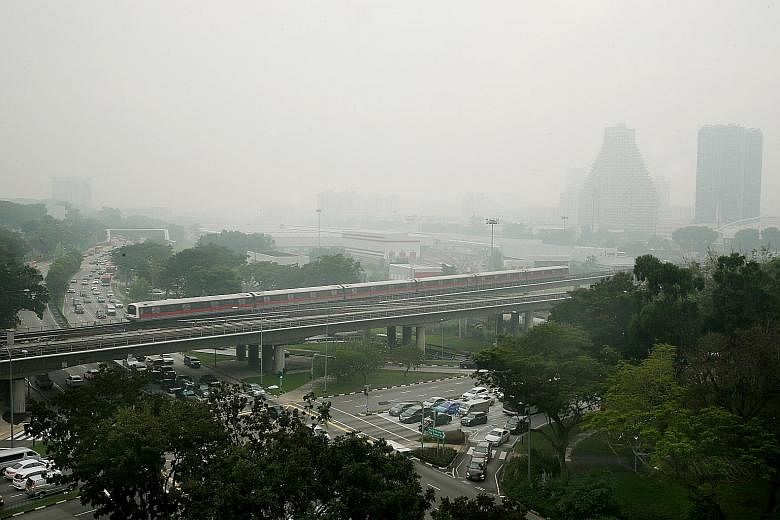The haze that hung over Singapore from Thursday night till yesterday morning was probably caused by local pollution instead of forest fires in the region, experts say.
"Based on the latest satellite images, there were no significant hot spots or smoke haze detected in the nearby region," said a spokesman for the National Environment Agency (NEA). "The haziness was due to the accumulation of particulate matter under light wind conditions," he added.
The 24-hour Pollutant Standards Index (PSI), a measure of air quality here, reached a high of 95 in southern Singapore at 8am yesterday.
A PSI reading above 100 indicates unhealthy air quality, while a reading of between 51 and 100 is considered moderate.
The 24-hour PSI across Singapore stayed in this range for the rest of the day, although readings in southern Singapore leaned towards the higher end.
Experts told The Straits Times there were a negligible number of hot spots in Riau, Sumatra and Kalimantan - provinces in Indonesia whose fires are usually the cause of smoke haze.
"This makes Indonesia unlikely to be the source of the bad air," noted Ms Zhang Wen, executive director of volunteer group People's Movement to Stop Haze (PM.Haze), which monitors haze conditions here. "Another significant source of our poor air is exhaust from traffic."
Usually, domestic pollution can be alleviated by the wind, she said.
"But as it was not windy yesterday, the pollutants could not disperse, making it look hazy."
The hourly concentration readings for PM2.5 - tiny pollutant particles associated with haze - also started inching up from Thursday evening, although their levels across Singapore returned to normal by 9am yesterday.
Air quality scientist Erik Velasco noted that hourly concentrations of nitrogen dioxide, a pollutant associated with the combustion of fossil fuels, also started going up around the same time as PM2.5 concentration levels.
Most of the haze dissipated by the afternoon, as the rain in the morning helped to improve air quality here. But even without the rain, the PM2.5 readings would have fallen as the day progressed, as hot, turbulent air movement during the day would have carried the suspended particles upwards and brought cleaner air downwards, diluting their concentration near the ground, said Associate Professor Koh Tieh Yong of the Singapore University of Social Sciences.
Assistant Professor Winston Chow, from the National University of Singapore's geography department, said yesterday's rain was common for this time of the year, as Singapore goes through the inter-monsoon season.
Singapore experiences most of its thunderstorms during this period.
NEA said thundery showers can be expected over the next few days.
"The likelihood of transboundary haze affecting Singapore is low," said NEA.


